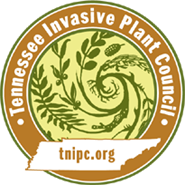Myosotis scorpioides L.
True Forget-me-not,Yelloweye Forget-me-not, Water Scorpion-grass Forget-me-not| Category |
|---|
| Forb/Herb |

Description
Myosotis scorpioides is an herbaceous perennial that grows 20-60 cm (8-20 in.) in height. This plant often creeps, and has fibrous roots or stolons.Stem
Erect, perennial forb, 4-24 inches tall with hairy stems.Leaves
The leaves of this plant are pubescent and evergreen. The lower leaves are usually oblanceolate while its other leaves are usually more oblong or elliptic. These leaves are obtuse and narrow at the base. They are 2.5-8 cm (1-3 in.) long and 7-20 mm (0.25-0.75 in.) wide.Flowers
The small flowers are usually blue (rarely white) with a yellow center. They are flat and measure 6-7 mm (0.25 in.) wide. The racemes are located terminally and are many-flowered. The pedicel is longer than the calyx, which is strigose.Fruit
Nutlets are smooth and shiny on spreading stalks.Images
Photo: Leslie J. Mehrhoff, University of Connecticut, Bugwood.orgMore images of Myosotis scorpioides
Life History
3. HabitatShady moist disturbed places, riparian areas, coastal forests and woodlands, moist meadows and fields, roadsides, old gardens and other areas near human habitation.
Origin and Distribution
Myosotis scorpioides is native to most of Europe and the western part of Asia. It is reported in the USA (AK, AL, AR, AZ, CA, CO, CT, DC, DE, GA, ID, IL, IN, KY, LA, MA, MD, ME, MI, MN, MO, MS, MT, NC, NH, NJ, NM, NV, NY, OH, OR, PA, RI, SD, TN, UT, VA, VT, WA, WI, WV, WY), CAN (BC, MB, NB, NF, NS, ON, PE, QC, YT), FRA (SPM)
Synonyms
Myosotis palustris (L.) Hill
h2. Management Recommendations
Mechanical Controls
Pulling, cutting, or disking. Picking by hand or removing with a pond rake will get rid of small stands. Larger infestations can be controlled with harvesting machines or treated with herbicide.
Herbicidal Controls
Glyphosate in a broadcast foliar treatment 1 to 2 qt product per acre. Larger plants may require higher rates. Spot treatment of 1% solution. Wiper treatment of 33 to 50% of concentrated products. Timing may be post-emergence to seedlings or to mature plants that are growing rapidly
Bibliography
Invasive.org
Myosotis palustris (L.) Hill
h2. Management Recommendations
Mechanical Controls
Pulling, cutting, or disking. Picking by hand or removing with a pond rake will get rid of small stands. Larger infestations can be controlled with harvesting machines or treated with herbicide.
Herbicidal Controls
Glyphosate in a broadcast foliar treatment 1 to 2 qt product per acre. Larger plants may require higher rates. Spot treatment of 1% solution. Wiper treatment of 33 to 50% of concentrated products. Timing may be post-emergence to seedlings or to mature plants that are growing rapidly
Bibliography
Invasive.org
Glyphosate in a broadcast foliar treatment 1 to 2 qt product per acre. Larger plants may require higher rates. Spot treatment of 1% solution. Wiper treatment of 33 to 50% of concentrated products. Timing may be post-emergence to seedlings or to mature plants that are growing rapidly
